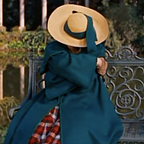Beyoncé and Jay-Z’s ‘Apes**t’ Was a Subtle History Lesson in Race and Power
The Carters weren’t just flexing by shooting their latest music video in the world’s largest art museum
Published in
8 min readJul 5, 2018
In the first music video from their collaborative album, Everything Is Love, Beyoncé and Jay-Z completely take over the Louvre. Long lines, security guards, and rope…
